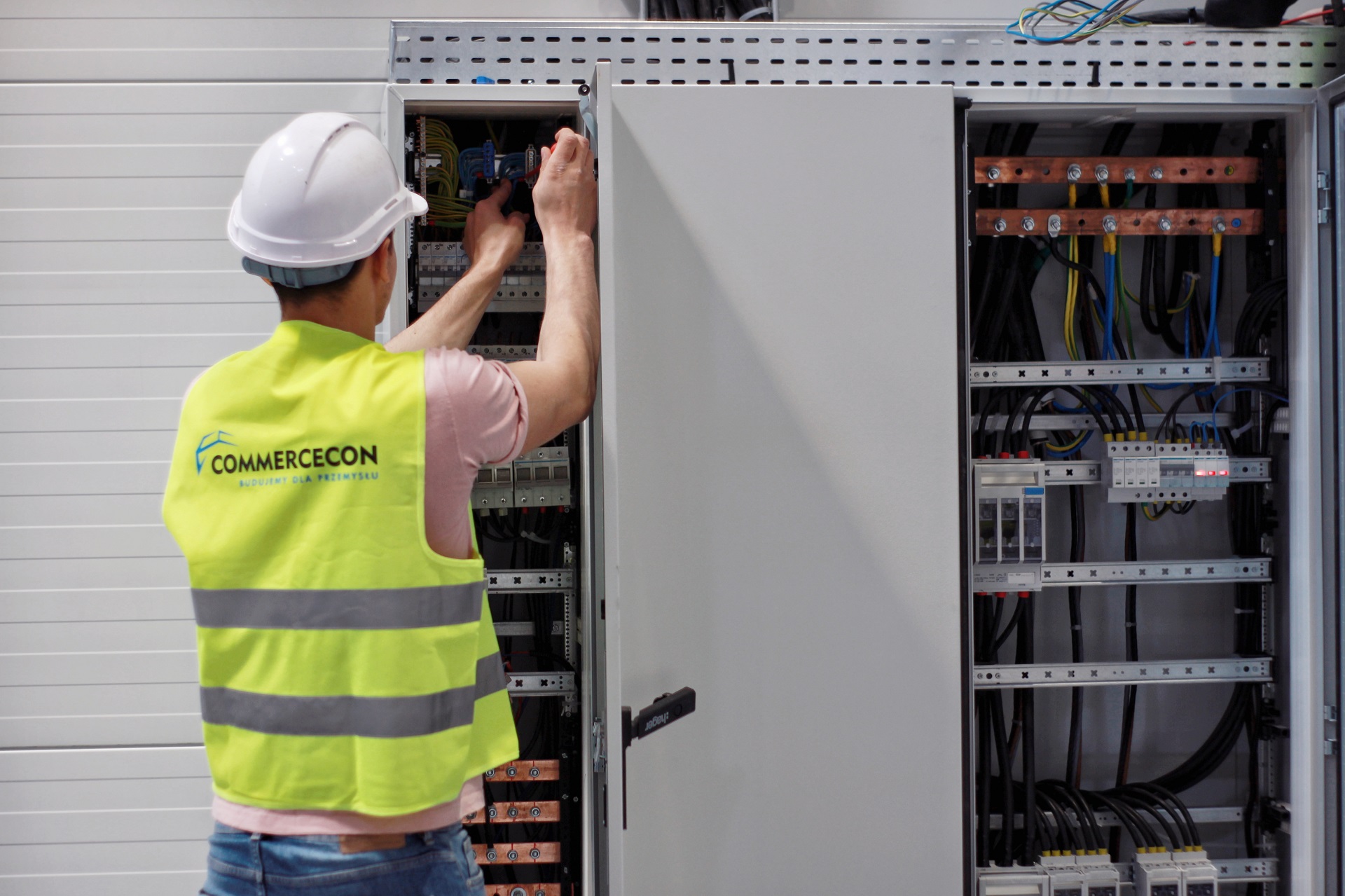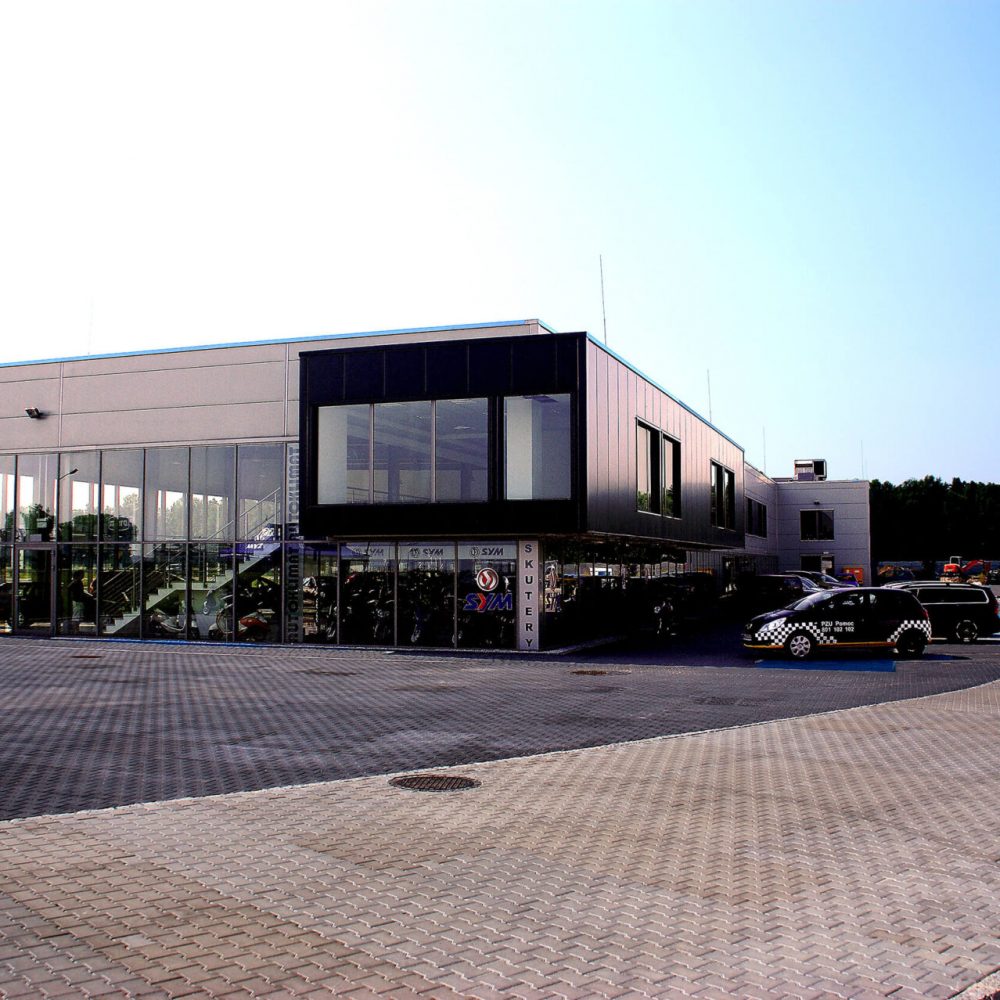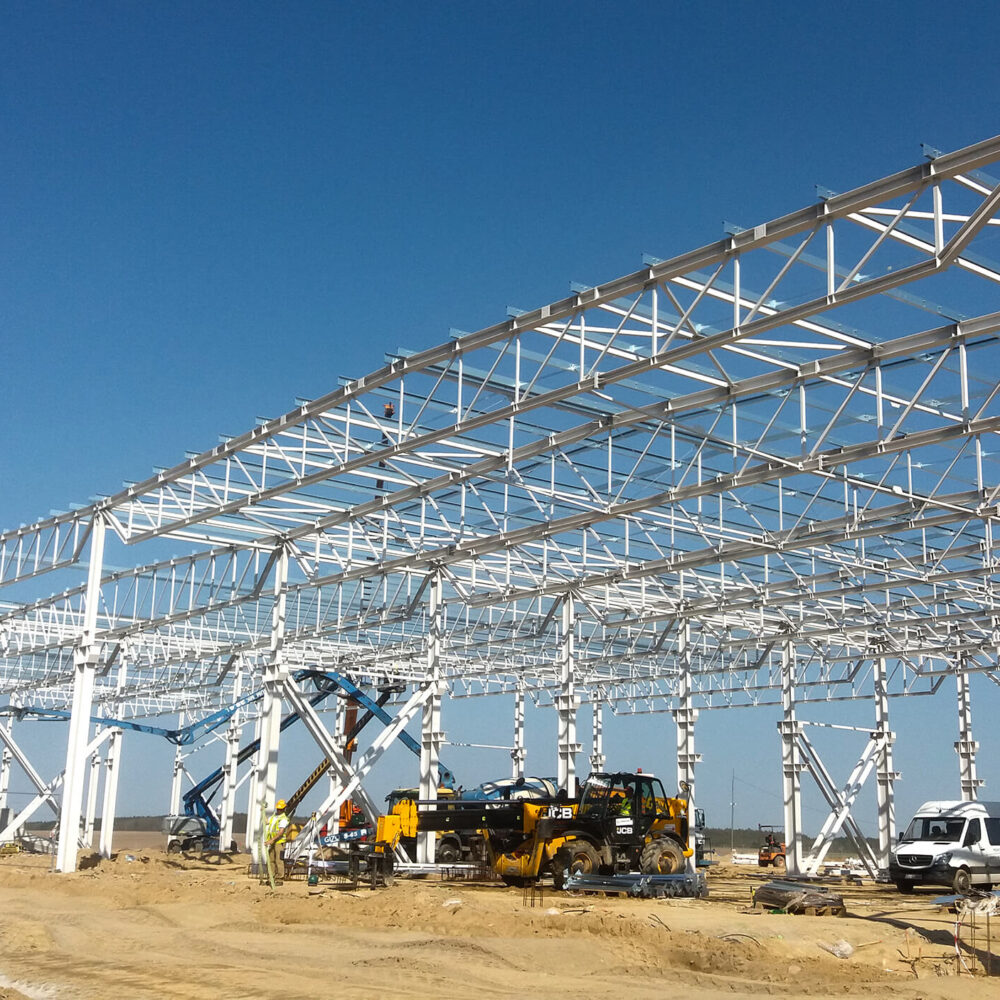
One of the very important elements to be taken into account already at the design stage of a modern hall is the power supply to the facility. Above all, it is necessary to calculate the electrical power requirements of all machines and equipment, while carefully planning the layout of lighting, sockets, power, equipotential bonding and telecommunications systems. What should power supply systems in steel halls look like?
A low or medium voltage source is used to supply the steel halls. The design of the electrical installation in the hall should take into account both the technical conditions of the site for the power grid infrastructure and the power to be installed in the facility. In the so-called power balance, i.e. the overall electricity demand of the facility, it is necessary to take into account all the equipment that will be used immediately as well as the additional units after possible expansion. Simply put, it is important that the balance sheet leaves some margin for future use.
Power supply system design
The power supply to the hall should always include a low voltage (LV) power connection if the storage halls are not complex and do not require too much power, or a medium voltage (MV) power supply for large industrial or production halls.
Note that it is the investor’s responsibility to apply to the administrator of the power grid for technical conditions, which are valid for 2 years from issuance, or for a power supply assurance commitment.
The technical conditions for power supply to a production hall specify the method of energy supply, connection power, place of connection to the grid and energy supply – most often these are the cable terminal or junction box. The scope of the work carried out by the operator shall be settled by a contract for connection to the power grid. The cost of connection is agreed individually.
Power supply systems in steel halls
Based on the technical conditions, it is possible to proceed to the design of the power supply for the facility. The design of the power supply system in the hall includes all field and internal systems, i.e.:
- Transformer station – in the case of a medium voltage energy connection, the station may be located in a free-standing building or in designated and separated technical area.
- The supply of external infrastructure i.e. sanitary facilities (e.g. sewage pumping station), buildings on the plot (e.g. gatehouse), possible vehicle charging stations or external lighting.
- Telecommunications ducting to enable connection to the structural network.
- Low-voltage switchgear to supply power to the hall and office/staff areas.
- Internal cable lines in cable trays, cable ladders or conduits.
- Installation of 400 VAC and 230 VAC sockets, power supply to HVAC equipment and, if necessary, equipment requiring power in the event of fire. In this case, certified power supply must be provided for in the production hall.
- Basic, emergency and escape interior lighting. The choice of lighting type and power is adapted to the purpose of the hall. Nowadays, high-efficiency LED sources controlled by motion or presence sensors are mainly used. This type of sensor allows you to switch on sections of luminaires. DALI system also allows the lighting to be dimmed and adjusted according to the intensity of the sunlight in the property.
- Lightning protection, earthing and equipotential bonding.
- Low-current systems, if required by the customer. These include LAN structured cabling, the survelliance with CCTV cameras and KD access control. By extending the functionality of the KD system, it is possible to obtain the Time & Attendance system. A SAP fire alarm system, voice alarm system in case of fire, public address system and the increasingly popular BMS building management system can also be installed.
- Power back-up installations via a UPS or genset if the customer cannot afford a power cut. Some warehouses or industrial halls require a permanent power supply due to the type of materials stored and, in the case of production halls, some processes cannot be interrupted, as interruptions generate very high material losses. The back-up power supply for warehouses and other facilities must therefore be included in the scope of the functional-utility study.
- Renewable energy solutions, such as photovoltaic systems or wind turbines located on the roof of the building or on the ground, which support the operation of the facility, minimising operating cost.
- The production hall process equipment can be supplied increasingly used busbars which allow for free arrangement of the production space and, thanks to drain cassettes, allow for many ways of supplying the machinery.
Technical conditions for the hall power supply
Power supply in storage halls must be provided taking into account several basic technical conditions. Firstly, the power supply to the warehouses must be provided using wires, cables, equipment, fittings and apparatus and devices with a safety mark or approval for use in construction industry. Secondly, all equipment including wiring, as well as installation paths, should be installed so that they can function freely. It is also important to provide easy access for inspection and maintenance. Thirdly, the power supply in warehouses and other types of facilities must ensure a continuous power supply with appropriate technical parameters adapted to the needs of customers. Fourthly, a uniform load on the phases of the supply lines must be guaranteed by properly connecting single-phase loads.

Furthermore, the design of the hall’s power supply should ensure that the power supply systems do not interfere with other utilities. Importantly, cable routes should be arranged in straight lines, parallel to the edges of walls and roads. In addition, switchgear with safety devices must be installed in such a way that it is easy to operate and protected against unauthorised access.
In industrial halls, power supply systems should be designed and protected so as not to be a source of fire in the building, and neither should the allow a spread of fire. They should guarantee protection of the environment from pollution. At the same time, the systems must not be a source of electromagnetic interference. The final requirement for the power supply in the storage halls is to minimise the interruption of electricity supply.
Once the power supply has been installed in accordance with the requirements provided and the design, the necessary measurements and acceptance tests are carried out, ended with handing over the measurement reports. Then, on the basis of these documents, contracts can be signed with the operator of the power grid and the facility can be put in use.



